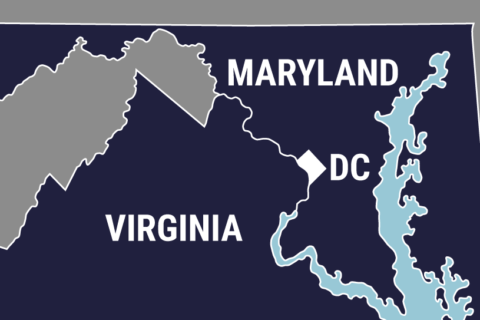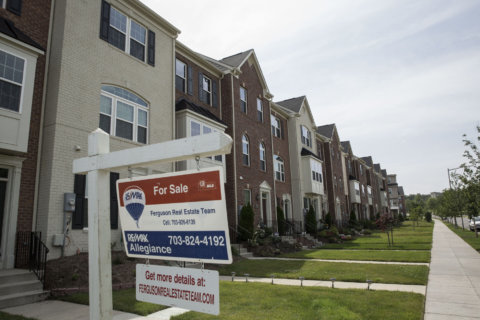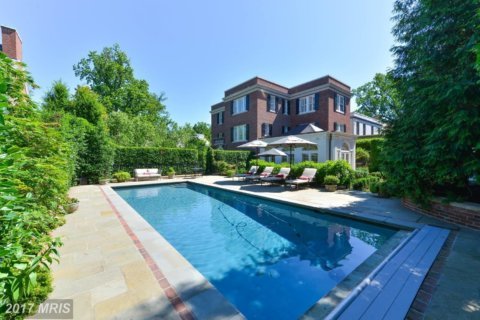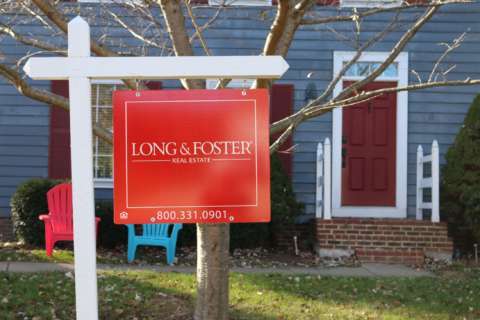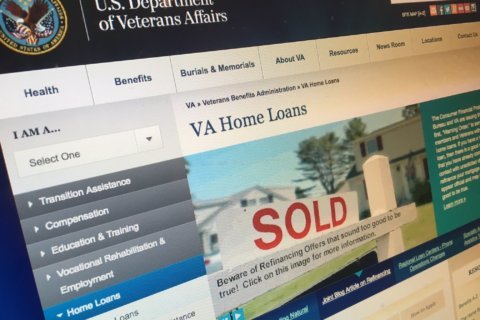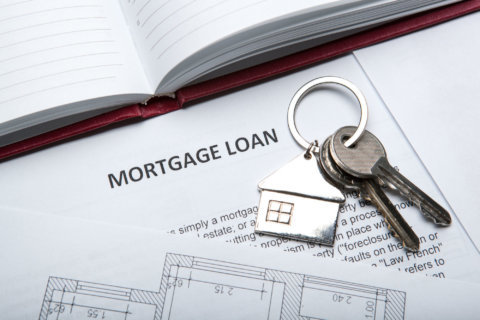In our three-part special report, Money On Our Minds, WTOP takes a close look at the financial situation of millennials in the D.C. area and how they make ends meet, with a focus on student loan debt, homeownership and retirement planning.
WASHINGTON — Millennial homeownership is growing. People age 37 and younger made up the largest share of homebuyers in 2017 at 36 percent, according to a report from the National Association of Realtors.
For 65 percent of those buyers, it was their first home.
But for many millennials in the D.C. area, there are a number of barriers holding back their homebuying process, such as student loan debt, an inability to make the down payment, and overall affordability issues in an increasingly expensive housing market.
D.C. couple Vonetta Young, 32, and Rustin Brown, 34, became homeowners last year when they bought their Shaw condo, moving back into the District from New York City.
Though Brown had grown up in Howard County, Maryland, and his parents were real estate agents, he and Young didn’t realize how competitive the D.C. market was until they were going through the process.

“Neither one of us was expecting for bidding wars to take prices so much higher than the list price. I mean, we were seeing things that were easily going for $70,000, almost $100,000, over the list price,” Young said.
D.C. has seen a population boom in the last 10 years, and the bulk of that growth has come from millennials moving into the area, said Yesim Sayin Taylor, executive director of the D.C. Policy Center.
In D.C.’s tight housing market, she said, that means affluent single and coupled millennials are competing with lower-income families when it comes to homeownership.
Well-off baby boomers who have sold their homes in the suburbs to move into the District are also competing, said Dawn Leijon with American University’s Kogod School of Business.
“So now you have poor millennials looking for a place to live and they’re competing with people who’ve just sold a house for $1 million in Potomac and they have the cash to buy some luxury thing,” Leijon said. “There’s a lot more demand than there was 30 years ago.”
Student loan debt
For millennials who have bought homes, around 53 percent said having student loan debt delayed their ability to save for a home purchase for several years, according to the NAR report. Overall, 46 percent of millennial homebuyers have student loan debt, the most compared with other generations.
When Young and Brown bought their condo, they had at least $130,000 of student loans to repay between them, from business school and law school, respectively. Young is a writer who previously worked in private equity; Brown works as a corporate lawyer.
Young said that while they had whittled down their student loan debt, they hadn’t made as much progress as they thought they would because of New York’s high cost of living.
She isn’t too worried about their student loan debt, though. “I think we have this idea that we have to have one loan at a time, either student loans or a mortgage, and that’s not necessarily true and winds up being a disadvantage at the end of the day because you’re not building,” she said.
“You’re sort of sinking yourself out of a hole, but not actually building a platform for you to stand on when you’re out of it.”
While student loan debt can be a barrier to buying a home, Arlington Homeownership Program Administrator Akeria Brown said that hasn’t stopped people from applying for her county’s first-time homebuyer programs.
“We do see a lot of student loan debt, and we tell people to just make sure they’re paying on a monthly basis, that they are not in deferment, that they’re not in default of those student loans, and those student loans do, in a lot of cases, count toward their debt ratio,” she said.
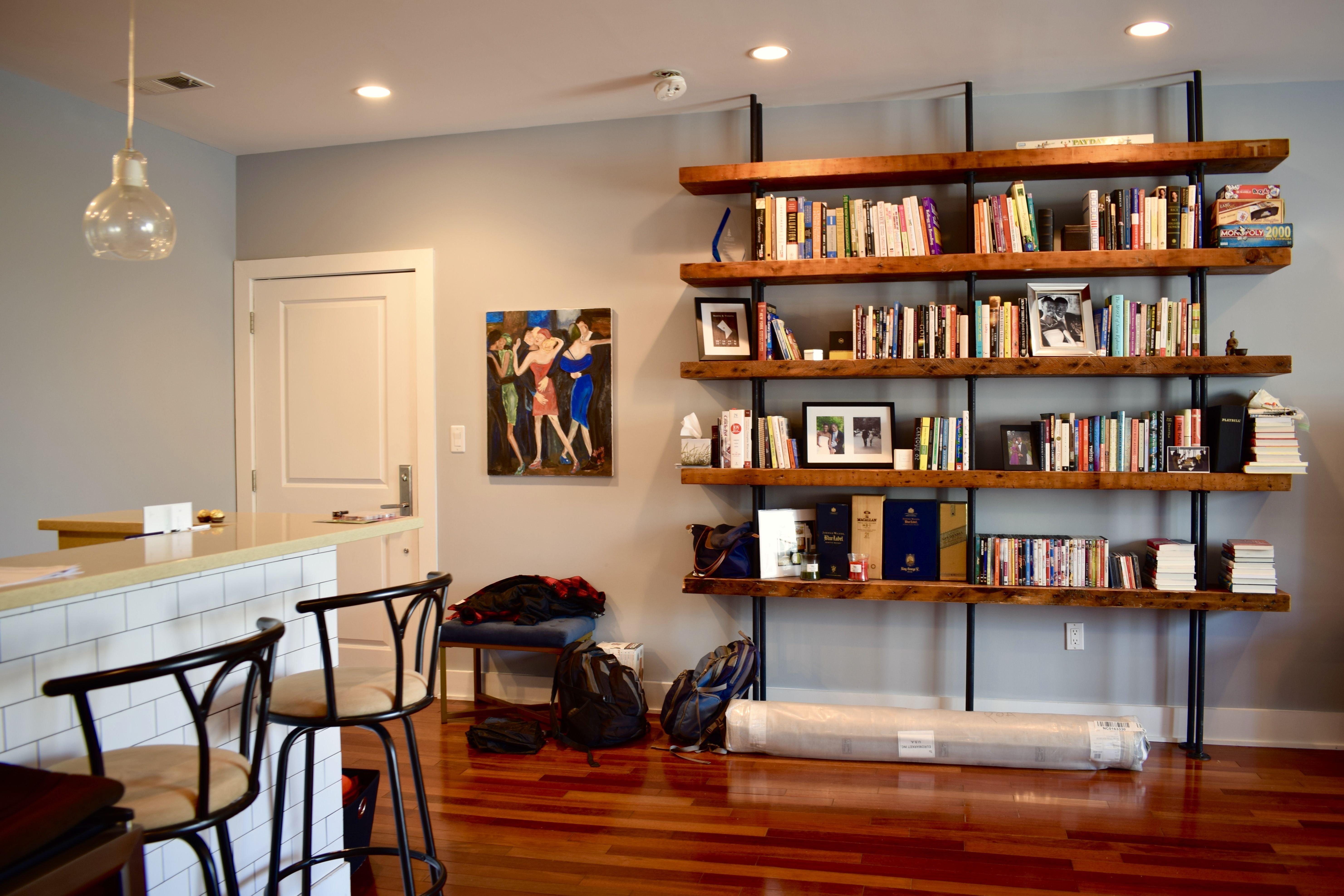
Help for first-time homebuyers
For millennials who are interested in buying a home, there are a wealth of federal, state and local first-time homebuyer programs that can help finance their purchases.
The Virginia Housing Development Authority offers a down payment assistance grant and a mortgage tax credit certificate, and first-time homebuyer courses are available online and in person.
Arlington’s Moderate Income Purchase Assistance Program provides a deferred-payment, no-interest loan that serves as a second mortgage that can cover a part of the down payment and all closing costs. And Fairfax County offers affordable housing for those who meet certain income thresholds.
Maryland has a range of programs, such as 30-year fixed-rate loans and a “SmartBuy” program aimed especially at homebuyers with student loan debt.
Montgomery County homebuyers can get a loan for down payment assistance from the state. And Prince George’s County offers deferred-payment, no-interest loan programs.
In D.C., there are programs to help with down payment and closing costs: DC Open Doors and the Home Purchase Assistance Program.
Akeria Brown said Arlington’s programs are a “stopgap” for people wanting to own a home in the county.
“We believe in homeownership not just for the wealthy but for the moderate-income household that can contribute to this community in various ways and will build this community for the long term,” she said.
‘Big wealth divide’: Unequal down payment access
Many times, those millennials who are able to enter into homeownership are more likely to have friends and family help with their down payment for a house than past generations, said Jessica Lautz, director of demographics and behavioral insights at the National Association of Realtors.
“And that is a huge difference. It’s creating a pretty big wealth divide between those who can get into homeownership and those who can’t,” Lautz said.
There’s an interesting dynamic happening where more than one-third of first-time homebuyers had help from family to enter homeownership, such as getting a gift or loan for a down payment, Lautz said.
Living at home with family for a period of time is also helping millennials save money.
“If you’re able to live at home with your parents and pay down on your debt, that’s going to give you a leg up, and there’s a lot of families out there who can’t do that, who can’t help financially to have that transfer for that down payment or to have the room to house someone over the age of 18,” Lautz said.
D.C.-area real estate agent Eli Tucker often works with millennial clients and noted that millennials who are able to put 10 to 20 percent down are getting gifts from parents.
“I think it’s really important for people to understand that the 20 percent mark, most people are not going to be able to hit that 20 percent mark until at the very least their mid-to-late 30s,” he said.
Tucker said family contributions are also occurring because parents see value in investing in D.C.’s market for its relatively stable economy.

“Generational wealth lives in the D.C. area,” he said. “To truly build wealth in America, with a moderate income, real estate ownership, in some ways, is one of the most important means of getting there.”
Rustin Brown stressed that even though his parents were able to put him and his siblings through private colleges, he doesn’t expect them to have a legacy or pass down a lot of wealth. He said he and his siblings are largely on their own financially.
But generational wealth has helped others greatly, he said, Some of his friends had parents who could help with down payments. And for those who didn’t have that assistance, “you’re behind the eight-ball, no matter how much money you have,” he said.
It took Brown and Young five years of marriage before they could save enough money for a 5 percent down payment.
“There’s a lot of people who will continue to be left behind, and the gaps will continue to be more and more spread out, just because of the way the system is, and the system is getting worse and worse, even though people have better and better intentions,” he said.
Racial disparities in homeownership
A major cornerstone of building wealth for middle-class families is traditionally through homeownership. But due to discriminatory housing practices and predatory lending that largely targeted minority households, particularly African-American households, a large racial wealth gap persists in the U.S.
According to the Economic Policy Institute, median wealth for white families, $134,230, is almost 12 times higher than median wealth for black families, $11,030.
D.C.-based writer Mel Jones wrote in a 2015 Washington Monthly piece about how black millennials are often expected to provide for their families and rely less on family help with expenses: “The gap in gifts, debts and inheritances creates a vicious cycle with large ramifications for many black millennials and their financial future — and when combined with redlining and unequal returns on income and education, the odds are stacked in a terrible way.”
Fifty years after the Fair Housing Act, black homeownership rates are still the lowest of all racial groups at 41 percent in 2016, taking a dip after the 2008 recession. Those rates fell particularly for younger members. White homeownership rates were the highest at 71 percent, rebounding close to pre-recession levels.
Since the 1980s, Taylor said D.C. has seen a large suburbanization of its black population. The city’s black population has decreased dramatically since its height in 1970 at 71.1 percent. By 2015, only 48.3 percent of D.C. residents were black.
The District has not done well to accommodate residents of varying income levels, she added. In fact, “economic segregation in the city has increased, actually,” Taylor said.
Prices on U Street, D.C.’s historic black neighborhood, soared above $900,000, with next door in Shaw going upward of $770,000. The Washington Post mapped out the region’s 2017 housing market using data from data analytics company Black Knight. Median sale price for homes east of the Anacostia River were still below $350,000.
D.C. native Lauren Grimes bought her first home in Marshall Heights for less than $200,000 in 2015. The 29-year-old had always wanted to own a home, and she had lived east of the river for much of her life.
“Both sides, paternal and maternal, they own property in D.C. But I noticed — I don’t know how early on, but at least in my 20s — how the environment in the city was changing,” said Grimes, who works as a program analyst in foreign policy.
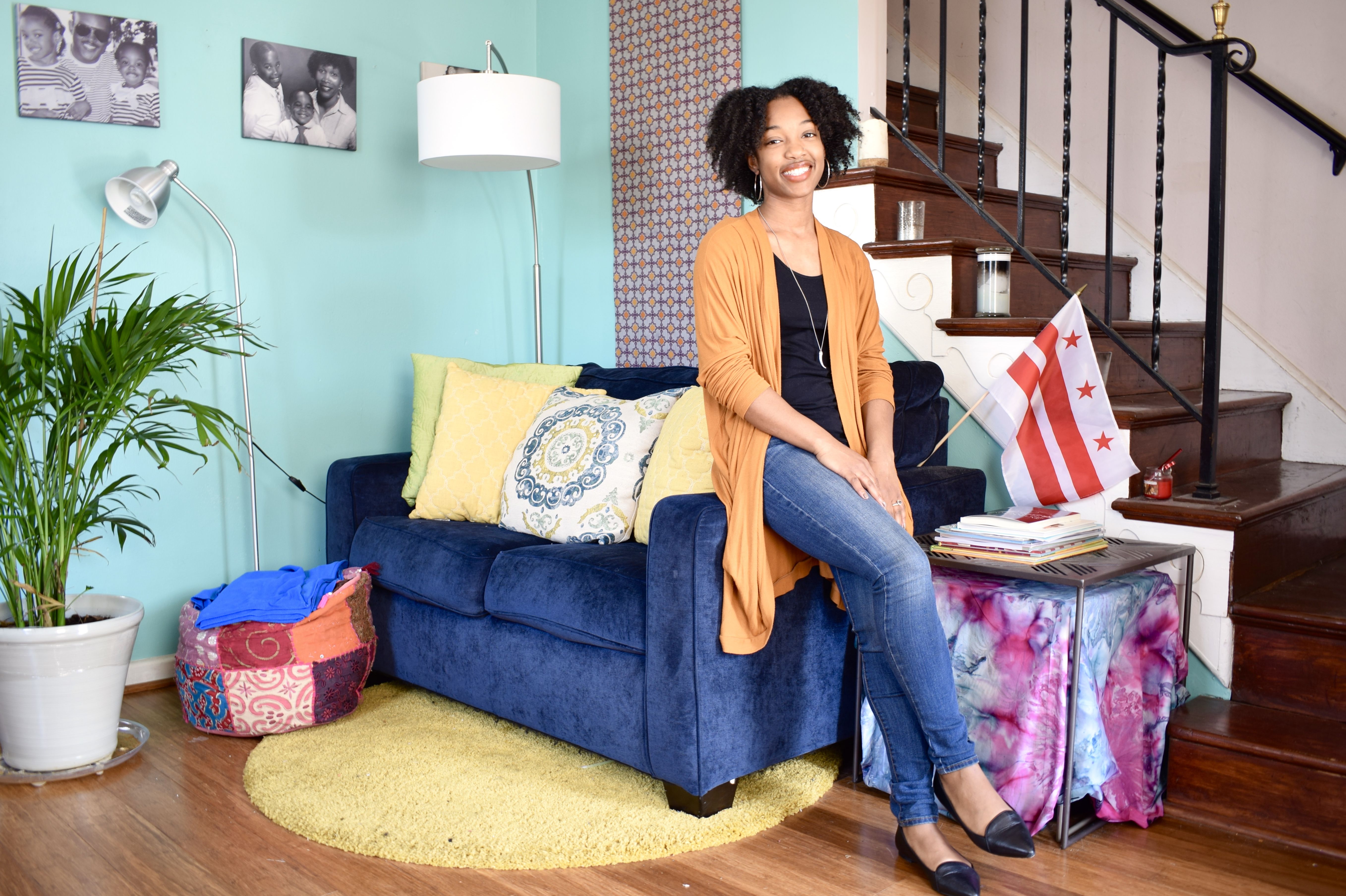
She said she didn’t want to be pushed out of the market completely and had help from a family friend who is a realtor in her search for a home.
Grimes didn’t use any of the local housing programs for first-time homebuyers, and said she was able to get a conventional loan because of her good credit score. If she had gone through with HPAP or other first-time homebuyer programs, she said she would have lost the chance to lock down the house because of the time it takes to get through those programs.
“My ultimate goal was to be able to have property here in D.C., and I accomplished that. So I can’t really complain about anything else,” she said.
Though she’s juggling her mortgage, student loans from graduate school, homeowner’s insurance and multiple utility bills, she said she isn’t living paycheck-to-paycheck and even meets with a financial adviser to help with her investments.
“I made a lot of sacrifices as a young person, but I know it’s going to be worth it later on in life,” she said. “We live in this capitalist society, and it’s hurting my people. It’s hurting black and brown people all over the U.S. And I don’t want to be caught up in that. So maybe I was subconsciously aware of that factor.”
But Grimes understands that just like going to college, owning a home isn’t for everyone.
“You have to consider what is best for you,” she said. “Plan ahead and do as much research as possible. There are so many different programs out there to help people purchase homes. There are so many opportunities to be a homeowner if you want to.”
Talking to people who have owned homes for a while, Grimes said, also helps. “I think there’s a lot we can learn from older residents in the city. They’ve watched the city change longer than we have.”
But in the end, she’s happy she became a homeowner after going from apartment to apartment.
“I’m glad I found this house, because now I feel like I have a safe haven. Not like I wasn’t safe before, but this is what I’ve always wanted. And I didn’t know that,” Grimes said. “It’s nice having a home and just feeling at home. Like, this is mine.”
More from the series ‘Money On Our Minds’:
- Part 1: Millennials attempt to stay afloat amid student loan debt
- Part 3: ‘I don’t know if what I’m doing is right’: Millennials face barriers to retirement planning


